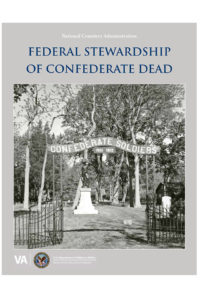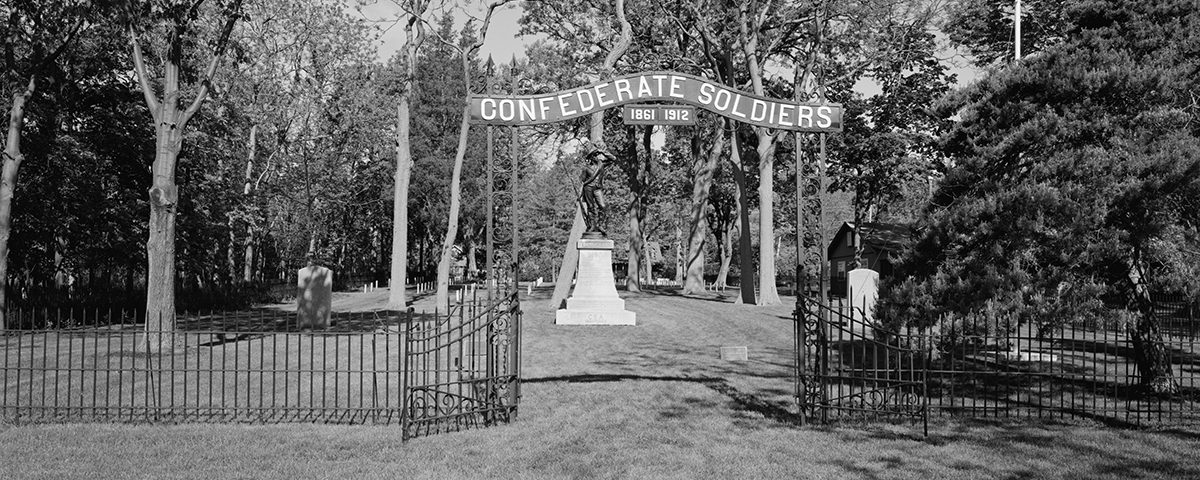National Cemetery Administration E-book
311 pages (including illustrations), July 2016
https://www.cem.va.gov/cem/history/
During the Civil War era and its aftermath, Union dead were treated honorably with burials in newly formed national cemeteries. Yet the U.S. government also found itself responsible for handling the bodies of Confederate soldiers, usually those associated with prisoner-of-war camps, which raised important questions about duty, honor, and jurisdiction.
Federal Stewardship of the Confederate Dead, a fully illustrated and exhaustively researched e-book created by the National Cemetery Administration (NCA), examines nine all-Confederate cemeteries and nine national cemeteries containing the greatest number of Confederate graves. The book is the result of a project conducted by the NCA’s History Program in the late 2000s, which collected information about NCA-owned cemeteries and memorials with Confederate burials.
 Part I of the study serves as historical context and covers the political implications of the treatment and marking of Confederate graves during and after the Civil War. This section details important legislation such as Public Act No. 38, which created requirements for Confederate grave markings that ensured respectful treatment, as well as an evaluation of the overall political and social climates–including the rise of the “Lost Cause” mythology–that determined the treatment of the Confederate dead well into the early 20th century.
Part I of the study serves as historical context and covers the political implications of the treatment and marking of Confederate graves during and after the Civil War. This section details important legislation such as Public Act No. 38, which created requirements for Confederate grave markings that ensured respectful treatment, as well as an evaluation of the overall political and social climates–including the rise of the “Lost Cause” mythology–that determined the treatment of the Confederate dead well into the early 20th century.
Of particular interest is the creation of the Confederate section of Arlington National Cemetery, the result of an appeal by Confederate veteran Samuel Lewis after a visit to the then-new burial ground. In a letter to the War Records office, Lewis wrote that, at Arlington, “There is absolutely no way to distinguish the grave of a Confederate Soldier from that of a Quarter Master’s Employee, a Citizen or a Negro Contraband.” (That this could have been a positive thing in terms of national unity was clearly not a consideration at that time.) Powerful testimony from other prominent former Confederates swayed President McKinley in their favor, and thus the Confederate section at Arlington was established in 1901. Particularly influential was the decision to distinguish Confederate headstones with pointed tops, a design that was replicated elsewhere in the years to follow.
Part II is focused on providing histories and physical evaluations of the individual cemeteries that were part of the study, based on records from the NCA, the National Archives, the Library of Congress, and other local and national data repositories. This section includes data relating to the number of Confederate dead in each cemetery, as well as the details of Confederate monuments, tombstones, and group memorials at each site.
Combining deep historic context with fascinating details and photos that cemetery buffs are sure to pore over, this book is a worthy addition (not to mention a free download!) to one’s virtual history bookshelf.

